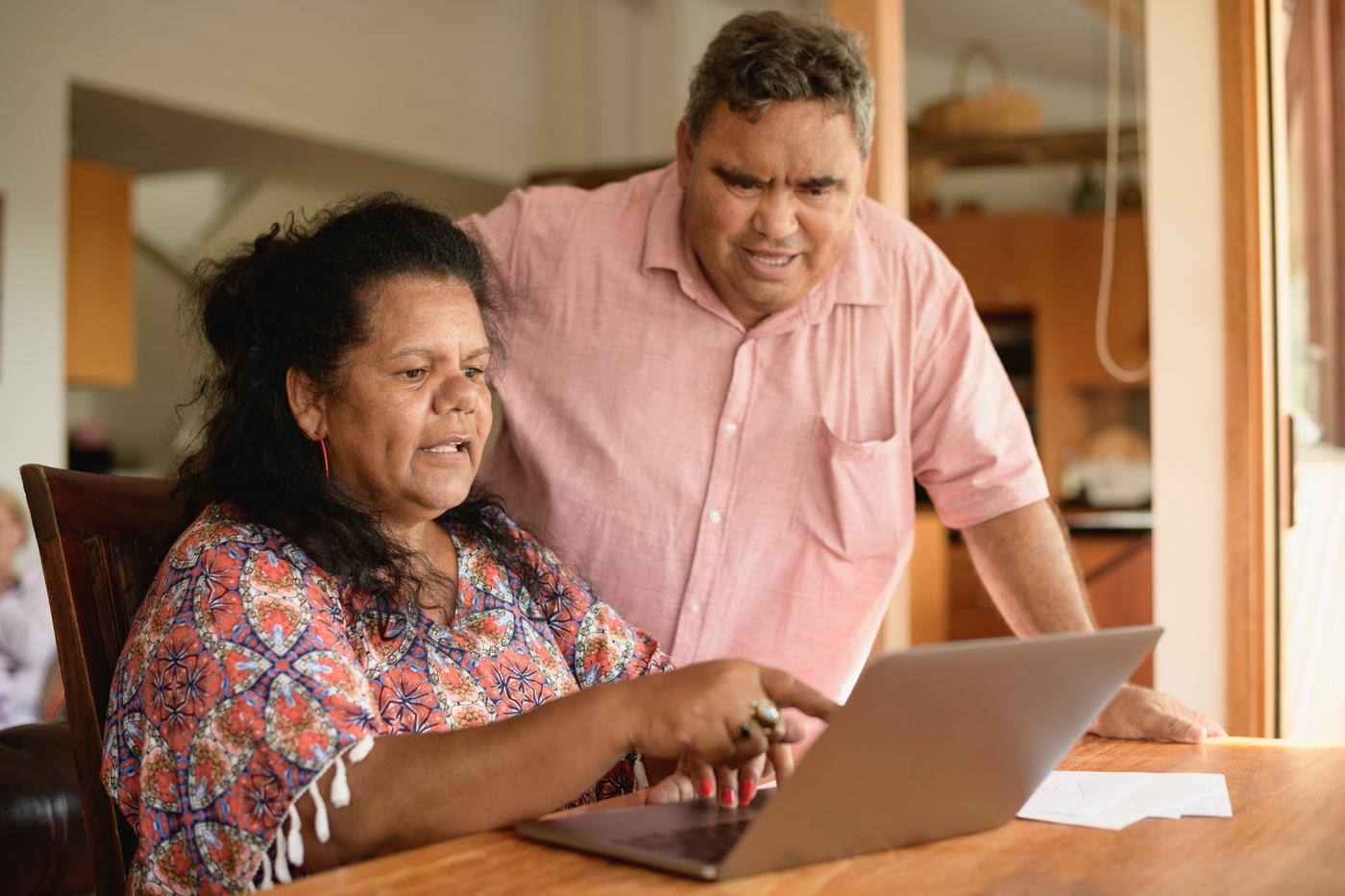Homepage
Different types of peer support
Peer support can take many forms. This includes reading a blog or chatting to peers at NDSS programs, sharing on social media or participating in a face-to-face group.

Face-to-face peer support
Meet and connect with peers who share common experiences about diabetes. Face-to-face peer support groups are a good option for people who are seeking a social connection and prefer face-to-face over online options.

Online peer support
Online peer support groups are a great way for people living with diabetes to connect with peers regardless where they live. This can be through Facebook groups, sharing posts on Twitter or a picture of their day on Instagram, connecting on a peer support forum or through a messenger app. Online peer support groups are a good option for people who are not able to or not interested in attending face-to-face peer support groups.

Meet peers at NDSS programs
NDSS programs are a great way to connect with others living with diabetes. These programs help you learn to live well with diabetes. There are face-to-face and online options to suit you.
Popular peer support group categories
For people living with diabetes
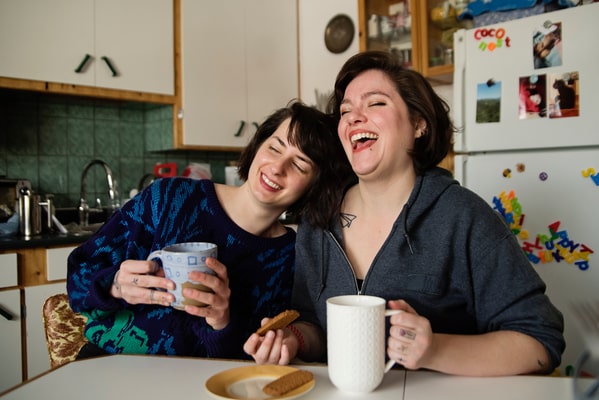
Living with diabetes can be overwhelming, exhausting or lead to feelings of isolation or loneliness. Peer support can be a great source of comfort and support and can help you sort through complicated feelings.
Peer support is connecting with peers, like you, living with diabetes. Peer support can take many forms, from a chat with a peer to a formal, face-to-face group.
Peer support can provide support through your diabetes journey, at key transition points like when diabetes first occurs, when changing medications or starting insulin or at other key life stages. Peer support may become an important tool in your diabetes management toolbox, helping you find “lifehacks” to make living with diabetes easier.
Peer support should never replace health professional advice.
Peer support has four main roles:
- To improve diabetes self-care through the sharing of useful tips, knowledge and lived experiences from peers.
- To offer emotional and social support through listening to peers.
- To help peers find and use healthcare systems and community resources.
- To offer ongoing support and encouragement to peers.
Peer support is available in many forms. Read on to find out about the benefits and types of peer support that may suit you.
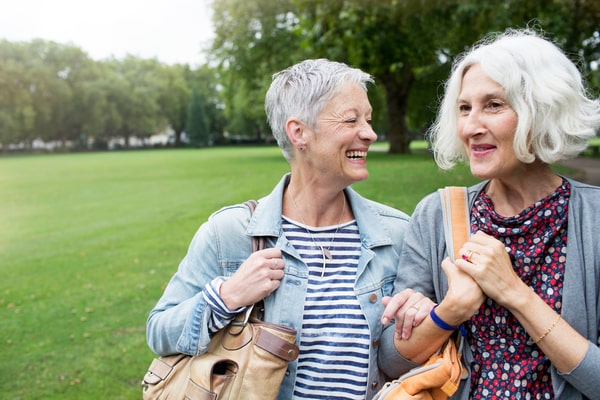
Studies of peer support have shown many benefits for people living with diabetes. Benefits of peer support are improved feelings of social and emotional health and better diabetes self-care.
Peer support helps:
- connect like-minded people who know what it is like to live with diabetes
- offer support in addition to the support from health professionals, who may not have as much time to talk about diabetes
- people share thoughts and feelings without the worry of upsetting friends and family
- add to knowledge and skills through shared experiences and insights from peers
- inspire peers to live well with diabetes, which helps improve quality of life.

There are many types of peer support, from informal discussions, more structured face-to-face meetings to online using social media and other platforms. There is no ‘one-size-fits-all’. Choosing a peer support type that suits you, your lifestyle and diabetes goals will help you get the most benefit. You may find connecting with like-minded people through social media suits you. Or you may enjoy the routine of face-to-face peer support groups.
Face-to-face peer support
Some things to consider when looking for a face-to-face peer support group are:
- whether the group is structured or unstructured
- where the peer support group will meet
- the number of peers in the group
- the aim of the diabetes peer support group.
Online peer support
- Blogs—allow you to follow a person’s journey with diabetes through reading their printed stories on a website. Sometimes you can join a mailing list or leave a comment or reply to the blog.
- Podcasts—are audio recordings that you can listen to through your computer or smart phone. You can find a range of diabetes-related podcasts, such as the NDSS Annual cycle of care podcast.
- Diabetes chat forums and websites, such as the MyDESMOND chat forum, for people with type 2 diabetes.
- Social media (Facebook, Twitter, Instagram) online platforms that allow you to share content and have discussions with other people living with diabetes. You can post and like videos, images and messages.
- YouTube—a video streaming platform where you can upload or watch other people’s videos of their lived experiences with diabetes.
- Reddit—an online community where you can post content about living with diabetes. You can rate content to help decide how useful it is.
NDSS programs
- NDSS programs include a variety of online and face-to-face options. At NDSS programs, you can learn more about diabetes and connect with people living with diabetes.
For facilitators

Are you thinking about starting a peer support group to connect with like-minded people living with diabetes but concerned about the complexity of starting a new peer support group? Do not be intimidated by the group in peer support group. You can make your group as relaxed and informal or as structured and formal as you like. There are also options for online or face-to-face groups.
Peer support can take many forms, from a casual chat with a peer over coffee, a formal meeting in a conference hall, an online Facebook group or an NDSS Program. If you are thinking about organising a new peer support group, think about your capacity and needs, lifestyle and preferences.
Providing advice
It is very important that you or your members do NOT give medical or legal advice to anyone. This is not your role and could expose you to legal risks. Instead, suggest they talk to a health professional, or call the NDSS Helpline on 1800 637 700.
If they are looking for legal advice, a good place to start is their local community legal service.
Structured and unstructured face-to-face peer support options
If you prefer meeting people face-to-face, consider whether you prefer structured or unstructured groups.
An unstructured group may meet semi-regularly for coffee at a café, for a healthy lunch or for a walk in a park – the options are limitless. Think about how you would like to connect and engage with other people living with diabetes. You can find people to join your group by listing in the peer support directory.
A structured group may require additional thought and planning. See our guide for Starting and running a structured face-to-face peer support group.
Online peer support options
If you prefer connecting with others online, think about the level of interaction that suits you and the platforms you are most comfortable using.
Do you enjoy sharing your personal story? Think about sharing your story on Your Stories, or write about your journey in a personal blog, share pictures of your life with diabetes on Instagram, a video on YouTube or TikTok. If you prefer a higher level of participation, perhaps a Facebook group or Twitter chat is a better option. You can set up a private Facebook group and organise the group around a common theme or interest, such as diabetes and physical fitness or baking.
See Running a peer support group online for more information to support you as you get started with online peer support.
Structured, face-to-face peer support groups can vary in how they are run and what they do. There are some key things which can help make your peer support group a success. Key things to think about when starting a face-to-face peer support group are:
Purpose—having a clearly defined purpose for your peer support group can help keep the group on track and engaged. It may take time to define the purpose. Some questions that may help are:
- What do I want to get out of the group?
- What do I hope others might get out of the group?
- What activities do I think are most important?
- What skills can I bring to this group?
Membership—different groups have different membership structures. Membership is open to people living with diabetes and people who support them. Groups may have members living with or affected by:
- type 1 diabetes
- type 2 diabetes
- a mix of people living with type 1 diabetes and type 2 diabetes
- gestational diabetes.
There are peer support groups for Aboriginal and Torres Strait Islander people and people from culturally and linguistically diverse backgrounds. You can also find diabetes peer support groups focused on activities, such as exercise, sport and eating out.
Group size—the number of members in your peer support group will depend on what your group can do. For example, if the main purpose of your peer support group is to provide information on diabetes from guest speakers, a larger group may work well. But if the purpose of your peer support group is to give emotional and social support, a smaller group may work better.
Making decisions—If your group is formal, then there may be times when group decisions need to be made. This may include decisions about which speakers to invite, how much money to collect to cover the cost of snacks or venue or the frequency of meetings. There are typically two ways peer support groups make decisions.
- Voting—a voting system is where more than half of the votes decide on the idea. This is done either as a secret vote, or by a raise of hands.
- Group talks—another way to make decisions is through group talks. This can take longer than voting, but it gives group members a chance to have their say.
Sometimes a smaller group, called a committee, makes decisions on behalf of the peer support group.
Frequency—This will vary based on the type of group. It is recommended to have at least four meetings per year. This helps members build relationships with other members and facilitators (group leaders).
Timing—the time and day will depend on many factors, such as:
- group size
- whether meetings are online or face-to-face
- availability of members—think about school holidays, public holidays, work schedules and religious celebrations.
Venue—the type of venue (or place) you choose will depend on the size, purpose and needs of your members. Some local community centres and clubs are free to use. Some also have a place to make tea and coffee. There may even be support from a nurse or diabetes educator.
Other important things to think about when choosing a venue are:
- availability of the venue
- how close the venue is to public transport?
- onsite or nearby parking
- hiring costs—if you plan to use a venue that has a hire cost, let the venue know you are an unfunded community group as you may get a discount.
- facilities (such as toilets, whiteboards and catering)
- capacity and size of the venue
- how easy the venue is to access for members?
Local councils usually list venues that are available to the public on their websites. Other options are a:
- café
- park
- community hall
- local library.
Roles and responsibilities—the group leader (facilitator) usually runs the meetings and helps guide decision making. They can delegate or give small jobs to others in the group. This helps ease the amount of work and limits burnout. But it is important to support those members who take on jobs. In a larger or more structured peer support group there may be other roles that need filling. These are:
- secretary
- treasurer (if collecting money for items like snacks, tea or coffee or to bring in external guest speakers)
- coordinator for activities
- coordinator for advertising
- library coordinator.
Sharing roles within your peer support group means there will always be more than one person who can do a job. Jobs can be checking emails or planning the next meeting. Having a roster (or list) where each member has a turn doing a job can work well.
Things to think about when choosing roles and responsibilities are:
- decide on the roles
- define what each role will do
- decide on the process for filling a role, and what you will do when people want to step down from a role
- make sure another member of the group can take on the role as a group leader when the facilitator is away.

Planning group activities
Some peer support groups choose to plan events for the coming year all at once. This lets members plan around other activities. It also helps the group have a balance of different activities and topics throughout the year.
It can be helpful to talk to members about what they would like. Some questions you could ask the group are:
- What type of activities or events suit our peer support group?
- What are our goals?
- What other people or organisations can help us?
Structuring a group meeting and record keeping
Agenda
For more formal groups, an agenda, which is a list of things you want to talk about in the meeting, can be used. It is a good way of keeping track of talking points that take place between members. You can give each topic on the agenda a time limit. This helps to keep meetings on track and on time. You can also make notes of things (called actions) that need to be done before the next meeting takes place. It can be helpful to give the agenda to members before the meeting. This way they have time to prepare. Always go over the agenda at the start of a meeting. This will give members a chance to raise any other issues as a talking point.
Common topics to have on an agenda are:
- Welcome—introduce any new members and guests
- Apologies—this is for members who cannot attend
- Review of the agenda for the current meeting.
- Give thanks for any good work or achievements since the last meeting.
- Ask if there are any issues that members would like to talk about.
- Recap (talk about how members thought the meeting went).
- Summary of tasks (or action points) that need to be done
- Reminder of next meeting date and topics that members would like to talk about.
Depending on the type and size of your peer support group, you may have extra agenda topics. These topics could be:
- Finances (if collecting money)—such as budgets, bank balances and statement of accounts.
- Correspondence—this can be a folder that is handed around the group. If members would like to talk about things in the folder, it is added as an agenda topic.
Minutes
Minutes are a written record of everything that has been talked about during a meeting. They do not need to be written word-for-word. But it is important that all decisions and actions are written down. Some peer support groups include meeting minutes in a more informal way, such as the member newsletter.
Tips to run an effective meeting
As the group facilitator, it is your responsibility to make sure the meeting stays on topic and on time. To help you do this, you can follow these points:
- Make sure you keep an eye on the time. Let members know how much time they can talk and let them know when their time is running out.
- Be aware of the members in the group. Have some members done most of the talking? Do some members look tired or bored? Does anyone look upset or unsure?
- Encourage all members to offer their points of view.
- Watch out for any disagreements. Take the lead on suggesting a way to solve disagreements or ask people how they would like to move forward.
- Be aware of all talking points and summarise key points.
Privacy and confidentiality rules
Group leaders should have a process in place to make sure member details are kept safe. Member details should never be given to third parties.
Providing advice
It is very important that you or your members do NOT give medical or legal advice to anyone. This is not your role and could expose you to legal risks. Instead, suggest they talk to a health professional, or call the NDSS Helpline on 1800 637 700.
If they are looking for legal advice, a good place to start is their local community legal service.
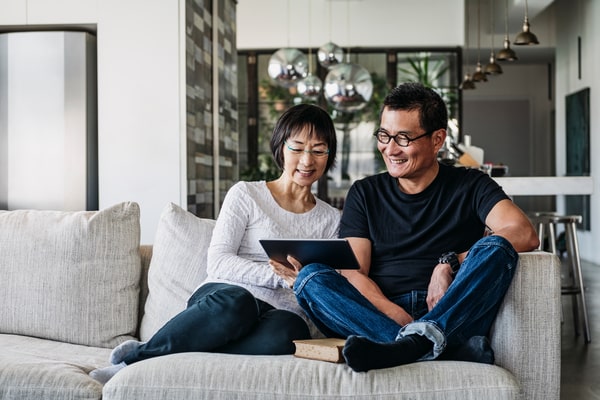
Online peer support has grown in recent years. It offers a cheap and easy way to connect people who have common interests. Online peer support is where like-minded peers share their experiences and knowledge of diabetes over the internet. There is a wide range of peer support platforms that can be found online. Online peer support is a good option for people who are busy or live in remote places. It is also a good option for people who are not ready or sure about face-to-face peer support.
Some examples of online peer support are:
- Closed Facebook groups with a diabetes focus
- Twitter hashtags and Twitter chats
- Messaging platforms, such as WhatsApp or Facebook Messenger
- Reading others’ lived experiences
- Chat forums
- YouTube
- Podcasts.
Online peer support talks are often led by peer group members. But it is helpful to have a group moderator (someone who helps monitor the chat). It is also helpful to have a set of rules that everyone in the group follows. This helps peers to know the type of behaviour and types of chats that are allowed.
Having a statement that clearly says the group does not give medical advice is a good idea.
If you plan to use a Facebook group, you will need to decide if it will be an open (public) or closed (private) group. A public group allows anyone on or off Facebook to see who is in the group and what they post. In a private group, only members can see who is in the group and what other members post. To become a member, users must request to join.
Providing advice
It is very important that you or your members do NOT give medical or legal advice to anyone. This is not your role and could expose you to legal risks. Instead, suggest they talk to a health professional, or call the NDSS Helpline on 1800 637 700.
If they are looking for legal advice, a good place to start is their local community legal service.

Setting some ground rules for your peer support group can help make sure everyone is treated with respect. While every peer support group is different, there are some common ground rules that may be helpful to start with:
- Show respect for others. Listen and wait for your turn to talk. Understand that other people may have a different point of view to yours.
- Do not share personal information with others without their permission, such as other members’ stories.
- Be considerate of others.
- Turn mobile phones off if meeting in person.
- Do not put others down or belittle them.
- Where possible, help to pack up at the end of the meeting.
- Understand and accept members from all cultures, genders and backgrounds.
- Promote health and wellness through not smoking and offering healthy food options during peer support group meetings.
- Bullying is not accepted under any circumstances. It will not be allowed within a peer support group setting or on social media. Always think about the words you use and how you communicate to others.
Preventing and managing conflict
When any group of people come together, it is common for there to be times of disagreement. While this may not be felt as conflict, it can be upsetting for some. This can result in more serious problems for the whole group.
Tips to help prevent and manage conflict:
- Be aware and acknowledge that there is disagreement or conflict.
- Create a safe space within the group to talk about their concerns and the best ways to move forward.
- Do not blame others.
- Be positive about points the group do agree on and clarify any issues that still need to be fixed.
Conflict can sometimes be a healthy way to discuss issues. And when it is handled in a respectful and clear way, it can have positive outcomes for the group.

How can I register a new peer support group?
To register a new support group, make sure your support group listing aligns with the Submission guidelines. For questions about listing a new peer support group, use the contact us form or call the NDSS Helpline on 1800 637 700.
For health professionals
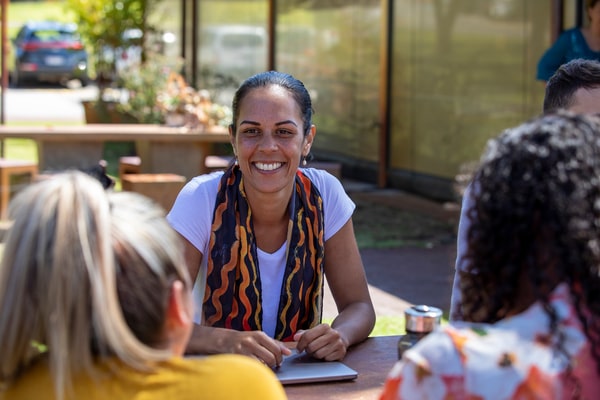
Diabetes peer support is not a replacement for health professional advice.4 Instead, it provides an opportunity for people living with diabetes to share their experiences, knowledge and challenges of daily diabetes self-management with their peers.1 Furthermore, peer support offers mental, emotional and social support that helps motivate and empower people to more effectively manage their diabetes through daily, consistent efforts.3
Evidence for the benefits of peer support
While some health professionals may have concerns about the transfer of misinformation in a peer support setting, research has shown peer support has many benefits. This is particularly because of the unique social elements of peer support that extend beyond a person’s standard social network.5 Peer support offers people the opportunity to share feelings without the worry of ‘burdening’ their family and friends. It also offers an environment that normalises the condition of diabetes through the sharing of lived experiences.11 Peer support has been shown to positively impact feelings of social support8 and emotional wellbeing3, as well as reduce diabetes distress6,7 and improve self-management behaviours8. Other peer support studies involving randomised controlled trials have found small, but statistically significant reductions in HbA1c levels.9,10,12
Although it is important to note the evidence for peer support models in diabetes self-management is still evolving, and peer support may be more beneficial for some people compared to others. Furthermore, comparisons between studies are often difficult due to variations in study methodology, participant demographics, diabetes duration and management, and how the model of diabetes peer support is characterised.5 However, given the many benefits of peer support models observed to date they may offer a sustainable and cost-effective long-term supplement to diabetes management and care.11

Peer support is available in many forms, from online chat forums to face-to-face support groups. Typically, peer support can be defined by one of four key functional areas:
- Linking people to healthcare or community resources.
- Providing social and emotional support.
- Providing tips and problem solving through shared experiences.
- Ongoing encouragement and support through proactive follow-ups.11
Knowing which type of peer support to recommend will depend on the person you are supporting, their preferences and their diabetes self-management goals. Some studies9,10,12 which have focused on HbA1c as an outcome measure have shown that those who benefit most from peer support include people who11:
- come from a culturally and linguistically diverse (CALD) background
- have a baseline HbA1c level above their target range
- are more socially disadvantaged
- have reduced engagement in their diabetes self-management.
It is also beneficial if contact with the peer support group is regular (i.e., at least monthly) and there is some form of structure and support for the peer group leaders.11
Peer support recommendation options
Use a supportive communication and language style to make your recommendation. You can look at the directory guide, which has a comprehensive list of peer support options, to make your recommendation from. Use active listening and be open and understanding of the response received regarding peer support.

There are many types of peer support, from informal discussions, more structured face-to-face meetings to online using social media and other platforms. There is no ‘one-size-fits-all’. Choosing a peer support type that suits you, your lifestyle and diabetes goals will help you get the most benefit. You may find connecting with like-minded people through social media suits you. Or you may enjoy the routine of face-to-face peer support groups.
Face-to-face peer support
- whether the group is structured or unstructured
- where the peer support group will meet
- the number of peers in the group
- the aim of the diabetes peer support group.
Some things to consider when looking for a face-to-face peer support group are:
Online peer support
- Blogs—allow you to follow a person’s journey with diabetes through reading their printed stories on a website. Sometimes you can join a mailing list or leave a comment or reply to the blog.
- Podcasts—are audio recordings that you can listen to through your computer or smart phone. You can find a range of diabetes-related podcasts, such as the NDSS Annual Cycle of Care podcast.
- Diabetes chat forums and websites, such as the MyDESMOND chat forum, for people with type 2 diabetes.
- Social media (Facebook, Twitter, Instagram) online platforms that allow you to share content and have discussions with other people living with diabetes. You can post and like videos, images and messages.
- YouTube—a video streaming platform where you can upload or watch other people’s videos of their lived experiences with diabetes.
- Reddit—an online community where you can post content about living with diabetes. You can rate content to help decide how useful it is.
NDSS programs
- NDSS programs include a variety of online and face-to-face options. At NDSS programs, you can learn more about diabetes and connect with people living with diabetes.
- Guide to successful peer support groups. [Internet]. National Diabetes Service Scheme (NDSS); Diabetes Victoria, 2020. [cited 2022 Sept 20].
- Speight J, Skinner TC, Dunning T, Black T, Kilov G, Lee C, Scibilia R, Johnson G. Our language matters: Improving communication with and about people with diabetes. A position statement by Diabetes Australia. Diabetes Res Clin Pract. 2021 Mar;173:108655. doi: 10.1016/j.diabres.2021.108655. Epub 2021 Jan 7. PMID: 33422586.
- Browne JL, Bennet A, Halliday JA, Holmes-Truscott E, Speight J. Diabetes peer support in Australia: A national survey. Diabetes Victoria, Melbourne; 2016 May [cited 2022 Sept 20]. Available from ndss.com.au/wp-content/uploads/resources/report-diabetes-peer-support-in-australia-study.pdf
- Taverna G, Higgs M. Working Toward Sustained Self-Management of Diabetes. DMJ. [Internet]. 2020 Aug [cited 2022 Sept 22]. Available from tangello.com.au/downloads/peer-support-for-sustained-diabetes-self-management?j=897304&sfmc_sub=91529888&l=35_HTML&u=15421771&mid=7269944&jb=1
- Jones C, Hider K, Hassard K, Speight J. Peer support in Australia: empowering people to live well with diabetes [Internet]. Health Issues Centre. Australian Diabetes Educator; 2017 [cited 2022Sep22]. Available from hic.org.au/wp-content/uploads/2019/11/HIC-Advocacy-in-action-toolkit-for-public-health-professionals.pdf
- Safford MM, Andreae S, Cherrington AL, Martin MY, Halanych J, Lewis M, Patel A, Johnson E, Clark D, Gamboa C, Richman JS. Peer Coaches to Improve Diabetes Outcomes in Rural Alabama: A Cluster Randomized Trial. Ann Fam Med. 2015 Aug;13 Suppl 1(Suppl 1):S18-26. doi: 10.1370/afm.1798. PMID: 26304967; PMCID: PMC4648138.
- Ju C, Shi R, Yao L, Ye X, Jia M, Han J, Yang T, Lu Q, Jin H, Cai X, Yuan S, Xie B, Yu X, Coufal MM, Fisher EB, Sun Z. Effect of peer support on diabetes distress: a cluster randomized controlled trial. Diabet Med. 2018 Jun;35(6):770-775. doi: 10.1111/dme.13625. Epub 2018 Apr 11. PMID: 29574995.
- Riddell MA, Dunbar JA, Absetz P, Wolfe R, Li H, Brand M, Aziz Z, Oldenburg B; Australasian Peers for Progress Diabetes Project Investigators. Cardiovascular risk outcome and program evaluation of a cluster randomised controlled trial of a community-based, lay peer led program for people with diabetes. BMC Public Health. 2016 Aug 24;16(1):864. doi: 10.1186/s12889-016-3538-3. PMID: 27558630; PMCID: PMC4995663.
- Zhang X, Yang S, Sun K, Fisher EB, Sun X. How to achieve better effect of peer support among adults with type 2 diabetes: A meta-analysis of randomized clinical trials. Patient Educ Couns. 2016 Feb;99(2):186-97. doi: 10.1016/j.pec.2015.09.006. Epub 2015 Oct 1. PMID: 26463156.
- Qi L, Liu Q, Qi X, Wu N, Tang W, Xiong H. Effectiveness of peer support for improving glycaemic control in patients with type 2 diabetes: a meta-analysis of randomized controlled trials. BMC Public Health. 2015 May 6;15:471. doi: 10.1186/s12889-015-1798-y. PMID: 25943398; PMCID: PMC4425885.
- Hendrieckx C, Halliday JA, Speight J. Diabetes and emotional health: A practical guide for health professionals supporting adults with type 1 or type 2 diabetes [Internet]. Canberra, National Diabetes Service Scheme (NDSS) , 2nd Edition 2020. [cited 2022 Sept 20]. Available from ndss.com.au/wp-content/uploads/resources/diabetes-emotional-health-handbook.pdf
- Patil SJ, Ruppar T, Koopman RJ, Lindbloom EJ, Elliott SG, Mehr DR, Conn VS. Peer Support Interventions for Adults With Diabetes: A Meta-Analysis of Hemoglobin A1c Outcomes. Ann Fam Med. 2016 Nov;14(6):540-551. doi: 10.1370/afm.1982. PMID: 28376441; PMCID: PMC5389404.
Hear their stories
Reading and watching the stories of others is a form of peer support. You can read stories from peers about their journey with diabetes.

Sonia Alcorm
Type 1 diabetes
“48 years of having diabetes has not stopped me doing anything.”
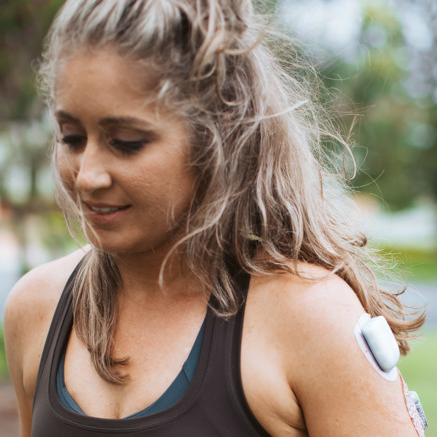
Tia Bravery
Type 1 diabetes
“Type 1 diabetes is a part of my life, but it does not define me.”

Melissa Stubbings
Type 2 diabetes
“I went through a lot of years, and this is true, of feeling really guilty that I had done this to myself.”
Would you like to share your story? Write or upload your story and you may also attach an image or video link with your story. Be sure your story follows the Submission guidelines.
Frequently asked questions
The peer support groups in the directory are run by peers who live with or are affected by diabetes. These groups are NOT run by the National Diabetes Service Scheme (NDSS).
You can find a peer support group by searching the peer support group directory. You can search for online or face-to-face options, or you can search by support group category. For some people, finding the right group may take time, but with our directory, you can quickly search for different types of peer support to help you find the right fit faster.
There are online peer support choices available. This means you do not need to be local to find peer support. Have a look at the directory to find an online peer support option that suits you.
If you are not sure if peer support is right for you, talk to people you trust such as friends, family or a health professional to help you decide.
It may take some time to find the right peer support group that suits you. Try a few types, online group, social media or face-to-face to help you learn what suits you. There are a lot of peer support choices available.
To register a new support group, please ensure your support group listing aligns with the Submission guidelines and have provided your consent and accept the privacy policy. For questions about listing a new peer support group, you may contact us using the contact us form or call the NDSS Helpline on 1800 637 700.
You can share your story through the Submit your story button on the website. You may attach a document, video or image with your story. Please ensure your story, video or image aligns with the Submission guidelines and you have provided your consent and accept the privacy policy. If approved, story submissions take about 2 weeks to be available on the website. If you have questions about posting a story or the status of your story submission, you may contact us using the contact us form or call the NDSS Helpline on 1800 637 700.
If you need help using this website, you may email us at [email protected] or please call the NDSS Helpline on 1800 637 700.
The Aboriginal artwork found on this site was commissioned for Diabetes Australia and created by Keisha Leon, an Aboriginal graphic designer and artist and a proud Waanyi-Kalkadoon (Mount Isa, Queensland) and Chinese woman. The artwork represents the Health Pathway towards healthier living through greater awareness and understanding, supportive, healthier, connected communities.

Find a support group
Are you looking for an online or face-to-face peer support group?


Register a support group
Do you manage a peer support group? Adding your support group to our directory provides a national platform for your group, to find additional group members or share information about your group to a wider audience.
If you want to add your peer support group to the directory, you can do so using the Register your peer support group button. Be sure your listing follows the Guidelines.



